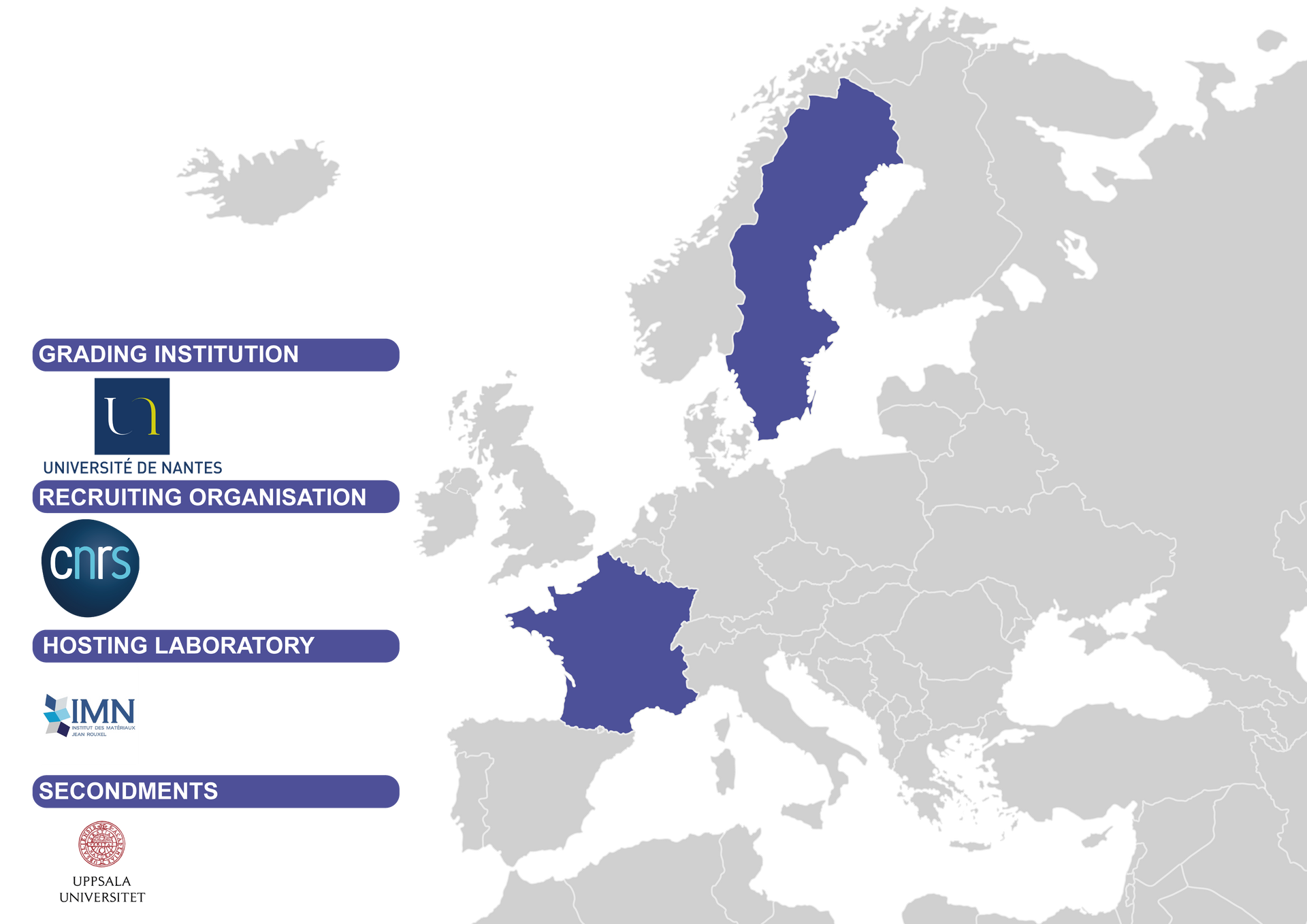TOPIC 07 - Soft solid state Li-organic battery: eco-design, performance, and recycling
While solid-state batteries hold large promises in terms of increased safety and higher energy density (primarily through their compatibility with Li-metal electrodes), there are large uncertainties regarding their potential sustainability and recyclability. One way to improve upon this issue is the employment of electrode and solid-state electrolyte materials which are potentially straight-forward to separate and recycle using non-toxic solvents and moderate temperature processing. This calls for the combinalion of soft solid-state electrolytes (polymer-based) and organic electrode materials. Recent lithiated organic hast materials can also operate under the same electrochemical potentials as LiFePO4, and thereby should render similar voltage batteries, but with fundamentally different carbon footprints and potential for recyclability. The focal point of this project is thus to promote the Li-metall\polyester-based electrolytellli-organic hast material concept. Besides, the use of soft and flexible polymers will mediate the electrode-electrolyte compatibility, and tailoring of the surfaces of the organic electrodes for compatibility with the electrolytes are certainly possible - e.g. through grafting on surface layers which are compatible with the chosen polymer electrolytes.
This PhD project interlocks three main parts. The first task (i) aims al developing a proper formulation for the positive organic electrode compatible with the chemistry of the soft solid state electrolyte. Magnesium (2,5-dilithium-oxy)-terephthalate (denoted Mg(Li2)-p-DHT) provided by large scale syntheses coming from another ongoing project will be the reference lithiated active material of the project, which could be synthesized from bio-sourcing. Preliminary electrochemical testing wil be performed to insure the efficiency of the composite by using a regular liquid electrolyte. The elaboralion and the implementation of soft solid state electrolytes can be perceived as the second main task (ii). The research work-will be mainly focused on innovative polyester-based electrolytes. Polyesters can for example undergo rapid hydrolysis in water-based environments, while the carbonyl group motif of the polyester is a versatile coordination environment for Li ions and can still provide comparatively high transference numbers as compared to polyether-based counterparts. Possessing highly desired low Tg values (e.g. 60 °C for polycaprolactone), the unwanted crystallinity of polyesters can be prevented through co-polymerization with
polycarbonates, rendering a largely amorphous matrix and thereby room-temperature ionic conductivity. Such polymer electrolytes have shown to be competitive in LillLFP cells over extended cycling, since the interfacial layers are ionically conductive. Full cells assemblies will be performed and
electrochemically assessed a different operating temperatures. Finally, the study of recycling solutions of such cells will be envisaged (ii). The tasks (i) and
(iii) will be performed al IMN under the supervision of Prof. P. Poizot and S. Renault, while specific research activity on the development of of sofl solid state electrolytes (task (ii)) will be more specifically investigated during 2 periods of 6 months secondment at Uppsala University, Uppsala, Sweden, under the supervision of Prof. Daniel Brandell.
Supervisor(s) contact: POIZOT Philippe, philippe.poizot@cnrs-imn.fr


